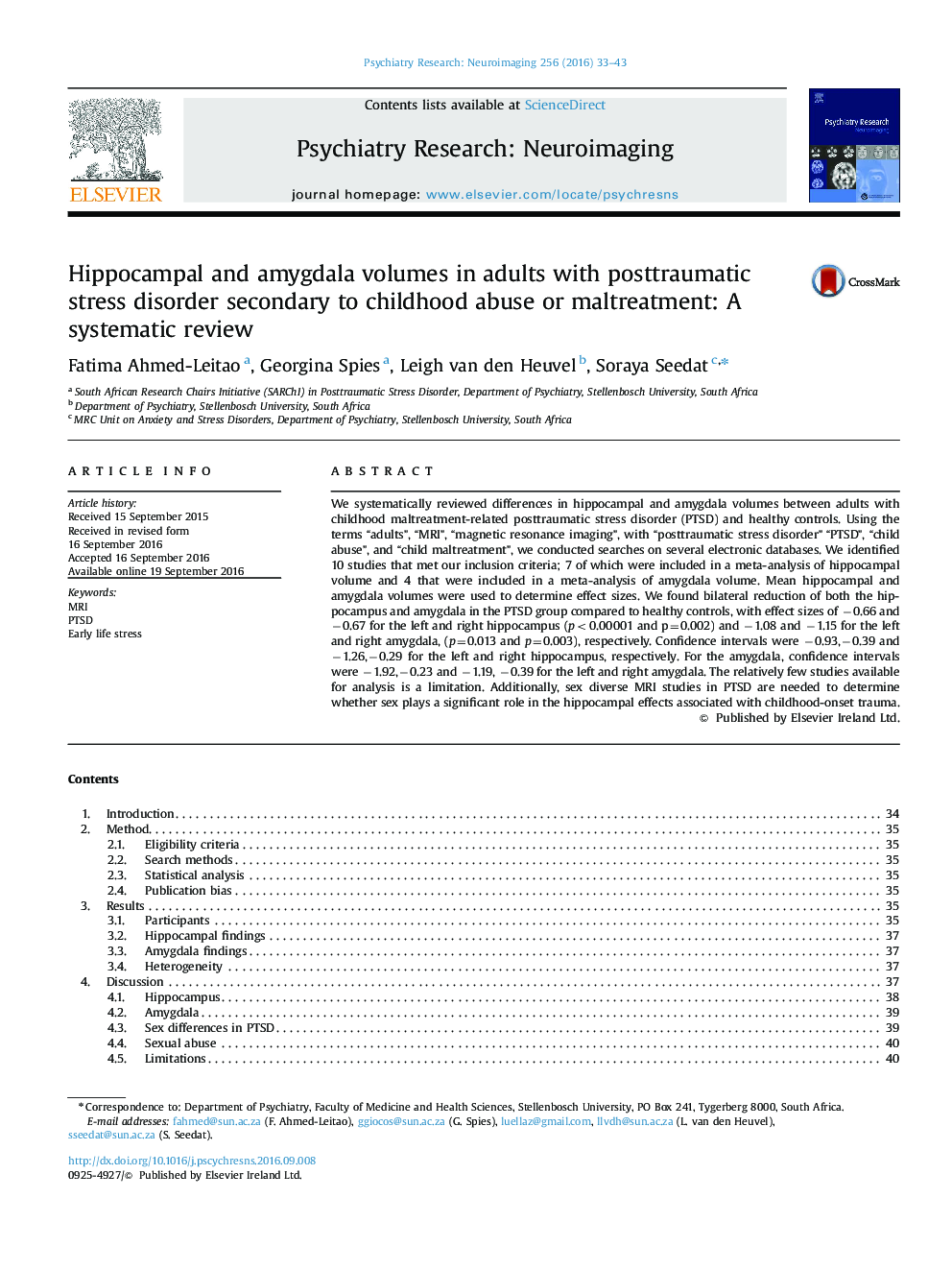| Article ID | Journal | Published Year | Pages | File Type |
|---|---|---|---|---|
| 4934046 | Psychiatry Research: Neuroimaging | 2016 | 11 Pages |
Abstract
We systematically reviewed differences in hippocampal and amygdala volumes between adults with childhood maltreatment-related posttraumatic stress disorder (PTSD) and healthy controls. Using the terms “adults”, “MRI”, “magnetic resonance imaging”, with “posttraumatic stress disorder” “PTSD”, “child abuse”, and “child maltreatment”, we conducted searches on several electronic databases. We identified 10 studies that met our inclusion criteria; 7 of which were included in a meta-analysis of hippocampal volume and 4 that were included in a meta-analysis of amygdala volume. Mean hippocampal and amygdala volumes were used to determine effect sizes. We found bilateral reduction of both the hippocampus and amygdala in the PTSD group compared to healthy controls, with effect sizes of â0.66 and â0.67 for the left and right hippocampus (p<0.00001 and p=0.002) and â1.08 and â1.15 for the left and right amygdala, (p=0.013 and p=0.003), respectively. Confidence intervals were â0.93,â0.39 and â1.26,â0.29 for the left and right hippocampus, respectively. For the amygdala, confidence intervals were â1.92,â0.23 and â1.19, â0.39 for the left and right amygdala. The relatively few studies available for analysis is a limitation. Additionally, sex diverse MRI studies in PTSD are needed to determine whether sex plays a significant role in the hippocampal effects associated with childhood-onset trauma.
Keywords
Related Topics
Life Sciences
Neuroscience
Biological Psychiatry
Authors
Fatima Ahmed-Leitao, Georgina Spies, Leigh van den Heuvel, Soraya Seedat,
